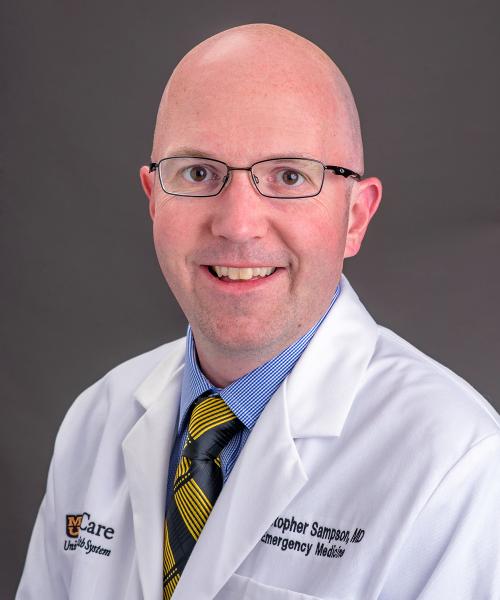The Problem
Emergency Medicine (EM) residents are expected to be familiar with and competent in performing a wide number of procedures, including rare ones such as performing an escharotomy in a patient with severe burns. Unfortunately, there is a paucity of readily available simulation models to facilitate practice of this rare yet potentially life-saving skill.
The Innovation
Using easily obtained materials, we designed a cost-effective model for escharotomy that can be modified to fit any high- or low-fidelity simulator.
This innovation was originally published in a JETem article in July of 2018. 1

Figure 1. Low-cost escharotomy training model
Target Learners
This model is designed for all levels of EM residents but can also be used to teach faculty, medical students and/or pre-hospital personnel.
ACGME Milestones
- General approach to procedures (PC9):
- Teaches procedural competency and corrects mistakes (Level 5)
- Wound wanagement (PC13):
- Manages a severe burn (level 3)
- Describes the indications for and step to perform an escharotomy (Level 4)
Group Size
The ideal group size is 4-6 learners per model.
Materials Needed
- 2 thick foam yoga mats
- Red or pink color
- Amazon.com for $16-18 each
- 1 roll of plastic wrap or cling film
- At least 100 feet long
- Amazon.com for $16
- One roll of packing foam
- ¼” thickness and 6” wide
- Purchased online in 40 foot rolls for $24
- Amazon.com – though currently out of stock
- Elastic rubber bands
- Intravenous tubing
- Steri-strips to secure tubing
- 4-5 rolls of medical white cloth tape
- Mannequin
- Punch biopsy tool, 2 mm
- Yellow string
- Fake blood (16 oz from Amazon.com for $18 or from a Halloween store) or red food coloring mixed with water
- A large bore stopcock manifold
- Optional: Butane torch (Amazon.com for $13) or make-up charcoal
Total cost of materials was under $60 and could be used to make multiple models.
Description of the Innovation
Creation of the model requires the following steps:
- Apply the yoga mat to the mannequin torso and extremities and then cover with a layer of cling wrap. This “red/pink” layer simulates underlying muscle/viable tissue beneath the eschar, which is the end point of the escharotomy procedure.
- Apply a layer of packing foam over the cling wrap to represent the eschared tissue that will be incised. Secure this in place with rubber bands.
- Layer IV tubing on top to provide realistic bleeding when the lower tissues are incised.
- Glue yellow string to the extremities to represent nerves.
- Tightly wrap cloth tape around the model to simulate overlying skin.
- Optional but effective final step: Char the tape to simulate the burned tissue. Learners are then able to realistically feel the sensation of incising through the eschar in order to release the compressive effects of the burned tissue.
This innovation can be combined with a high-fidelity mannequin simulation session or used by itself in a procedure lab. If used as part of a high-fidelity mannequin session, the escharotomy can be included in a scenario involving a patient with severe, full-thickness burns. If included as part of a procedure lab, the model can be used to specifically teach escharotomy and have the learners demonstrate the procedure.

Figure 2. A yoga mat is applied to a mannequin torso and extremities to simulate underlying muscle. A cling film is wrapped over the yoga mat layer.

Figure 3. A layer of packing foam is then applied and secured with rubber bands. Underlying IV tubing simulates bleeding when lacerated during the simulation.

Figure 4. Cloth tape is tightly wrapped around the simulator. The materials are then charred to better simulate the sensation of releasing tension through the escharotomy.
This model can be used for multiple levels of learners. Other possibilities for its use include:
- Assessing learner knowledge of correct escharotomy lines by having them draw proposed escharotomy lines on the mannequin with a marker pen.
- Practicing cutting with a scalpel down to viable tissue (the red/pink layer). The incision should spring open once the eschar is divided.
- Practicing running fingers along the length of the wounds to detect and individually divide any constrictor bands.
- Practicing dressing the wounds, such as with cling film, post escharotomy.
- Following completion of model construction, learners can initially draw escharotomy lines on model to indicate incision locations. Using the scalpel, the learner incises through the eschar (cloth tape) and rubber band until they reach the healthy tissue underlying represented by the red yoga mat.
Lessons Learned
- Participants found that the model familiarized them with the escharotomy procedure more effectively than a traditional lecture on the topic, and ultimately allowed them to feel better prepared to perform this rare procedure.
- Participants also found that the model effectively replicated the relevant human anatomy for the procedure.
Theory Behind the Innovation
The educational theory behind this innovation is the concept of deliberate practice. Deliberate practice refers to the theory that learners can effectively develop skills through repeated systematic and focused attempts to improve.2
The use of simulation provides the opportunity for residents to engage in deliberate practice of required skills during high acuity, low occurrence (HALO) events. The goal of simulation is that the learner will be prepared to confidently manage these scenarios and perform appropriate procedures when they occur in real-life practice.
This innovation gives residents the ability to feel what it is like to perform an escharotomy on a model that simulates the anatomy of a real patient, including the localized bleeding and the release of constricted tissues that occurs with this procedure.
Read more about the IDEA Series.
Author information
The post IDEA Series-JETem Innovation: A Low Cost Escharotomy Simulation Model for Residency Education appeared first on ALiEM.

